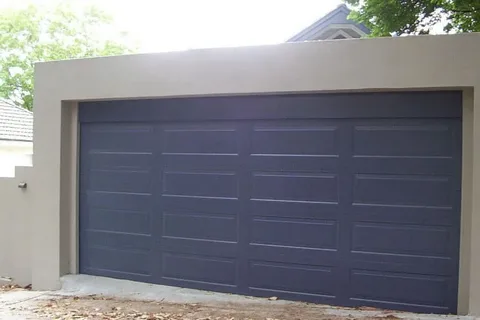Circuitry of a B&D Panel Lift Door Motor: What Happens Behind the Wall Button
- Admin

- May 7
- 3 min read

The B&D Panel Lift door motor is a household name in Australia, ensuring smooth and efficient operation for sectional garage doors. Although the user knows the convenience of just pushing a wall button to open and close their garage door, few comprehend the complex circuitry involved in doing so. This blog explores the electrical parts and circuitry within a B&D Panel Lift door motor, how it operates and what occurs when you push that wall button.
Overview of B&D Panel Lift Door Motors
B&D Panel Lift door motors are specifically engineered to automate sectional garage doors, with a variety of models that differ in features and capacity. These motors usually draw power from a 240V AC supply and employ a 24V DC motor to drive the system. The system comprises a number of major components:
Motor Unit: This is the system's core component, which is used to lift and lower the door.
Control Panel: Contains the electronic circuitry that controls door movement, safety functions, and user input.
Wall Button: A straightforward interface that provides commands to the control panel.
Safety Sensors: Optional devices that sense obstructions in the path of the door.
Circuitry Components
The circuitry of a B&D Panel Lift door motor includes a number of key components:
1. Power Supply
Transformer: Steps down the 240V AC mains supply to 24V DC for the motor.
Power Cables: Connects the transformer to the motor unit.
2. Motor Control Unit (MCU)
Microcontroller: Processes user inputs and controls motor operation.
Relays: Switches the motor on and off according to MCU commands.
Sensors: Detects door position and obstacles (if fitted).
3. Wall Button and Remote Controls
Switches: Basic on/off switches that pass signals to the MCU.
Transmitters: In remote controls, radio signals are transmitted to the MCU receiver.
4. Safety Features
Obstacle Detection: Utilizes infrared beams or pressure sensors to close the door if an obstacle is detected.
Auto-Close: Will close the door automatically after a period of time if left open.
How the Circuitry Operates?
When you push the wall button, the following happens:
Signal Transmission: The wall button sends an electrical signal to the MCU.
Motor Activation: The MCU decodes the signal and activates the motor through the relays.
Door Movement: The motor starts to open or close the door as per the command.
Position Monitoring: Sensors monitor the position of the door and provide feedback to the MCU.
Safety Checks: If an obstruction is sensed, the MCU shuts down the motor to avoid damage or harm.
Troubleshooting Common Issues
Knowing the circuitry assists in troubleshooting common issues:
Door Won't Open/Close: Verify power supply, ensure the wall button is working, and check that safety sensors are not unnecessarily triggering.
Motor Not Responding: Check the motor unit for indications of wear or damage. Double-check that all connections are made securely.
Intermittent Operation: May be due to faulty relays or sensors. Call a professional to repair.
Maintenance Tips
Maintenance regularly ensures your B&D Panel Lift door motor runs smoothly:
Clean Sensors: Ensure safety sensors are dust and debris-free.
Inspect Power Cables: Verify all connections are tight and not damaged.
Lubricate Moving Parts: Lubricate rollers and hinges regularly to minimise wear.
Conclusion
The electronics in a B&D Panel Lift door motor are more intricate than they appear, consisting of a highly advanced interaction of electrical devices and safety mechanisms. By knowing how these systems operate, users can diagnose problems better and service their garage door systems properly. Whether homeowner or professional installer, understanding what goes on behind the wall button can give you a greater appreciation for the technology that makes your garage door easy and safe to operate.








Comments